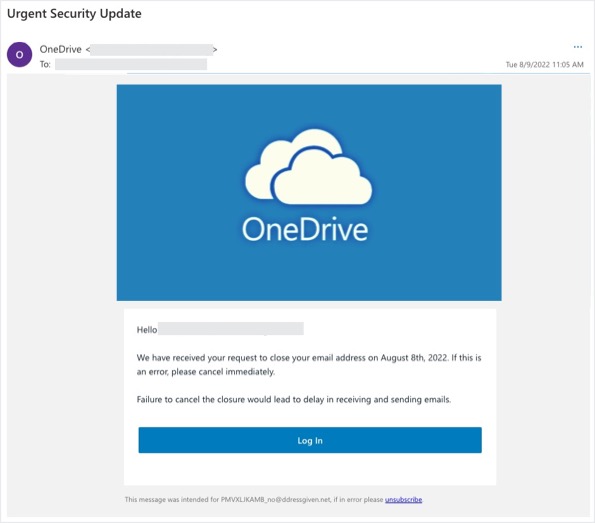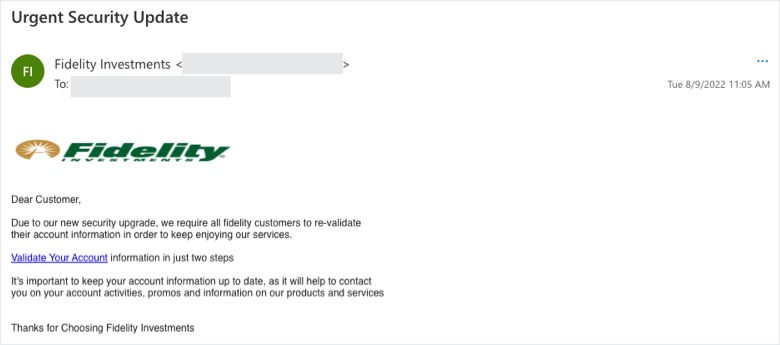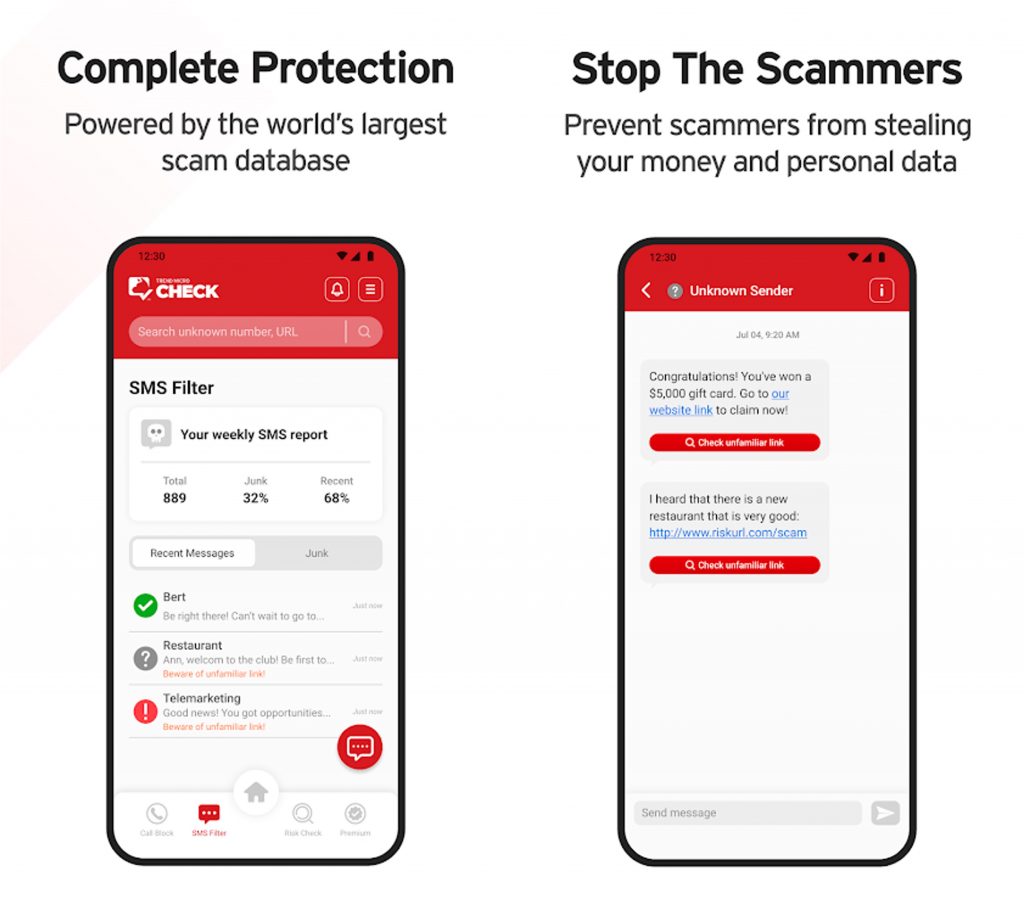If you’re a regular reader of this blog, you’ll know that we post a lot about phishing scams. And there are good reasons for this: they’re everywhere, a lot of people fall for them, and they can be potentially devastating.
This week we’ve observed three phishing scams that have been spreading all over the US. Keep on reading to learn about them, as well as how to avoid them.
OneDrive Phishing Scam
Scammers have been impersonating Microsoft’s popular cloud storage service, OneDrive. They’ve been sending out bogus emails to people informing them that there is an “urgent security update”.

Although the content of the email is somewhat confusing — it seems the scammers may have got OneDrive mixed up with Microsoft’s email service, Outlook — the message’s goal is to get people to click on the blue “Log In” button.
Once clicked on, the button leads to a malware-infected website.

If a victim were to click on the red button, malware would be downloaded onto their computer.
Malware will commonly be designed to steal personal data and passwords, delete files, and render computers inoperable, among other malicious things.
Fidelity Phishing Scam
Fidelity Investments, commonly known as Fidelity, is a financial services company based out of Boston. Scammers have been impersonating this company to try to steal people’s personal and financial information.

The malicious email above, which they’ve been sending to massive amounts of potential victims, claims there is a new security upgrade and all Fidelity customers need to re-validate their account information. Of course, this is complete nonsense.
All the scammers want is for victims to click on the “Validate Your Account” link. If they do so, they’ll be taken to a phishing website. Any and all personal and financial information entered onto the site will be sent directly to the scammers, which they could then use to commit any number of other crimes.
Fake Warning Phishing Scam
Rather than impersonating a specific company, in this scam, the scammers have taken a more generic approach.
Via text message, potential victims are told that their user account is in danger of being closed. It’s not true of course, the scammers just want them to click on the link embedded in the message. Two examples of these malicious messages are below.
- (39778) we are closing user accounts with malicious website activity. {URL} goto the link provided by end of day to scan your devic
- (96348) We are currenty terminating User accounts with malicious website activity. {URL} Goto the link provided by Aug7th to secure your device.. 1229
If clicked on, the link will take victims to the malicious website in the screenshot below.

The victims are led to believe that their device is infected with malware. They’re instructed to click on the “Fix now!” button. However, all information on this page is a complete lie, and if they click on the button, instead of fixing their device, it will in fact infect it with malware.
How to Protect Yourself
- Be highly suspicious of unsolicited messages, even if they seem to be from well-known companies.
- Exercise caution when clicking on links.
- Use Trend Micro ScamCheck to detect scams with ease — for FREE!
Trend Micro ScamCheck — our 100% FREE browser extension and mobile app — can protect you against scams, malicious websites, dangerous emails, and lots more! If you come across something dangerous online, you’ll be alerted in real time so you’ll know to stay well clear.


As ever, if you’ve found this article an interesting and/or helpful read, please do SHARE it with friends and family to help keep the online community secure and protected.
1 Comments
- By Trend Micro | October 31, 2022
